Happy Holidays!
Happy Holidays from Makeagingwork.com



Photo by Tim Cooper on Unsplash
I recently answered this question for an obvious younger whippersnapper on Quora.com.
With the 20th anniversary of that age within view for me, I had a few thoughts I’ve accumulated over those two decades.
I hope you won’t expect much more than a cake with a lot of candles on that day, along with a whole bunch of unfunny ageist birthday cards, and a nauseating rash of “over the hill” comments from so-called friends. For example:
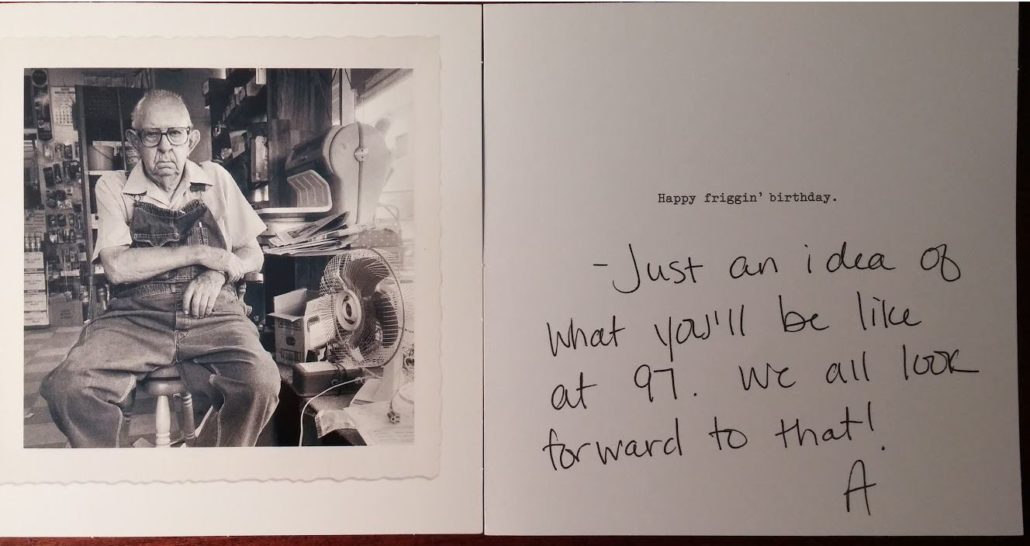
Birthday card from my daughter
Most people get there. How is it more significant than say 50 or 65?
Or any age, for that matter.
As they say, it’s just a number.
Things didn’t start falling off 20 years ago when I turned 60. I was still playing pickup basketball and lifting weights 5x a week. I had to give up the BB at 63 because of a knee issue but still lift weights aggressively 3x per week.
I did notice a slight reversal at or around that time – nose running and feet smelling (sorry – old bad joke!).
I went against the grain and decided to leave corporate life and start my own business. The idea of retirement didn’t appeal to me then and still doesn’t.
I had grown accustomed to being told that I looked and acted much younger than my 60 years. My response was then – and still is today – that it’s not an accident or genetics. I work at it, physically and mentally. Then and today.
If I tie how I feel or expect to look to a number, I have the wrong mindset. Based on my number and the current average life span of the American male (78.6), well – I missed my funeral.
I am so mystified and miffed at the strange hold that the number 60 and 65 have on us in the U.S. It’s an artificial finish line, an arbitrary number with no particular significance other than the tag the government tied to it 86 years ago and the number the financial service industry keys off of as they help you plan for your demise.
The crest of the hill? The start of the downward slide?
Really? Let’s give it a break and not assign any particular significance to a number, least of all this one.
Willam Shatner didn’t. Do you see what he’s doing at age 90? Or Warren Buffet? Or Clint “The Mole” Eastwood? Betty White will become a centenarian in a few months. It’s a long list of folks who blew past 60, then 65, and didn’t tag any significance to it. Maybe that’s why they’ve been so successful.
Just one big thing.
I’d have a better handle on my essence.
Eeew!! That sounds so esoteric, new agey.
But it’s true. I cut the cord and stepped into the entrepreneurial world totally unequipped and for the wrong reasons. Three decades of corporate life had done nothing to equip me to start my own business. I had never encountered the type of mental challenges that come with putting it on the line with your own business.
I bailed from corporate to have more freedom, to get away from the lack of control of my time and my schedule, and, from self-centered, ladder-climbing bosses. And I bought the Koolaid that said starting your own business in the new world of the internet (yes, it was a baby back then) was going to be easier and more profitable than ever. The work-from-home, control-my-time, t-shirts-and-shorts-wardrobe dream was very alluring.
What I didn’t do was to fully understand what I was really good at and what I wasn’t so good at.
It took me over a decade, a big bunch of stumbles, and an embarrassing slice of a healthy “retirement savings” to come face to face with the fact that I was – and had been for nearly 40 years – operating outside of how my maker had really wired me up and equipped me.
We buy into the 20th-century linear life model of learn-earn-retire and end up with a life spending 40 years busting the hump for what?
FTM – For The Money
-and that nirvanic pot of gold at the end (around 60) called retirement, that unnatural concept that doesn’t exist in nature, didn’t exist anywhere on the planet 150 years ago, was conceived for political purposes, and takes us away from how our biology serves us.
At 60 or thereabouts, a fork in the road appears. Start the downward slide or relaunch. Is the rest of your life going to be another and different type of takeoff – or a landing?
Your mind and body are not ready for a landing – they don’t want a landing. They are built to last 122 years and 164 days because a lady in Paris set that benchmark for us in 1997. Reaching 60 isn’t even halfway to that biological benchmark. Yet we cash out at an average age of 80 – only 65% of our full-life potential.
Perhaps much of that is due to the mindset and the decisions that we make at or around age 60.
If you’ve checked, you know that we are living longer than previous generations – maybe by as much as 20, 30, 40 years. Turning 60 and facing another 30 years changes the narrative that we’ve lived with for the last 50 years that says you’re done being anything other than a consumer at 60 or 65.
Be a producer, not a consumer. Forget the self-indulgence.
We’re led to believe that we’re “entitled” to a life of leisure in our later years, that we’ve paid the price to “the man” and earned the right to be a self-indulgent and selfish consumer.
There’s a risk in all that because it doesn’t serve our biology well.
Pre- and early-retirees list these as their greatest fears:
So, at 60, expect your surrounding culture to put certain expectations on you, all based on outdated, irrelevant narratives.
Your choice then becomes buying in or going against the grain. At 60, chances are high that you’ve got lots of gas left in the tank. Resist the pressure and temptation to start the withdrawal and your biology will reward you accordingly.
Consider the possibilities of leveraging decades of acquired skills, experiences, and wisdom to do something the world needs and that is aligned with your innate talents.
I love – and have adopted – a credo followed by Dr. Ken Dychtwald, gerontologist and the world’s foremost authority on aging, that he unveils in his autobiographical book, “Radical Curiosity.”
At 60 and beyond, you are ideally equipped to do just that.
60 yet? We’d love to hear what it was like for you and what followed. Leave a comment or shoot an email to gary@makeagingwork.com.

Yes, life does go downhill, but –
-we have some choices in the matter.
Not with the eventuality of it, but with the starting point and the pace.
The reality is, we took out a death certificate at birth. Or, as retired Stanford geriatric physician, Dr. Walter Bortz once wrote:
“Life is a fatal disease. Once contracted, there is no known cure.”
Our brains will have matured by our early- to mid-twenties. We grow to physical and reproductive peaks in our late twenties. From that point, the gradual, eventual decline begins. Unnoticeable at first, but commencing insidiously and at a pace determined to a significant degree by-

-the lifestyle choices we make in these early years.
Graph A:

Graph B:
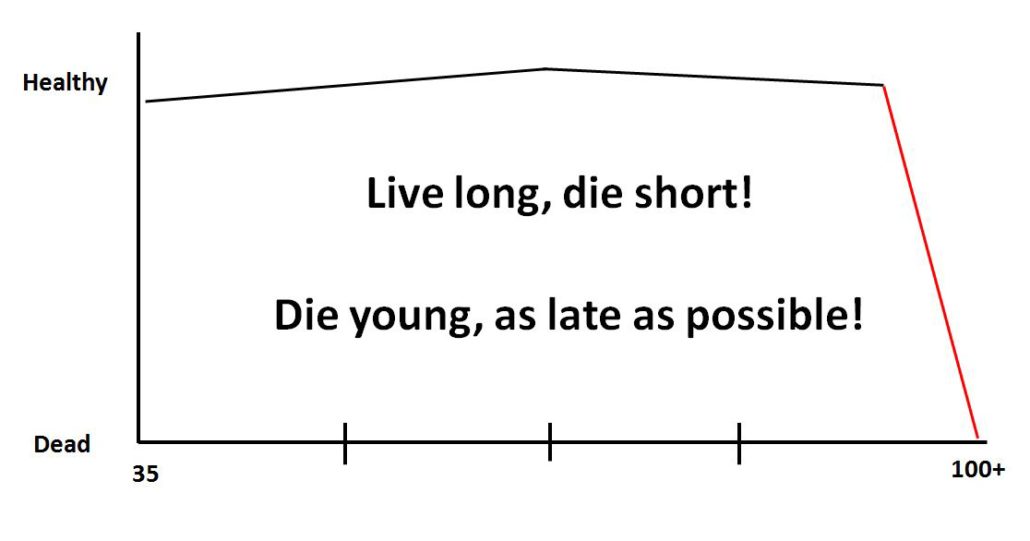
Notwithstanding the rare chance that a person has blue-print errors (genetic defects) at birth, Graph A is, unfortunately, what the life curve becomes for most people across the average lifespan: a peak at mid-life followed by an accelerating downslope, often undetected at first and too often ignored when detected.
The start of this downslope and its severity is impacted significantly by the choices made earlier in life.
The pace and severity of the slope are also impacted by the choices made at mid-life and beyond.
(My thanks to Exercise Physiologist Dan Zeman for this analogy)
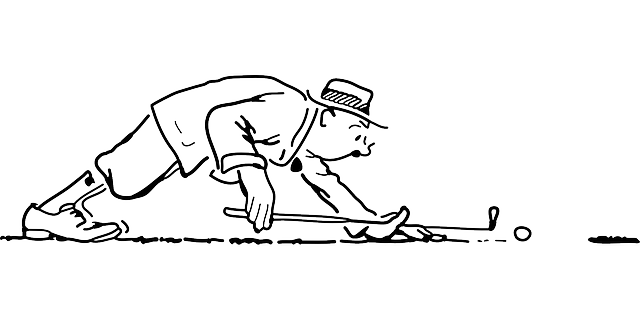
The choices made – for example, diet, exercise, stress relief – during the Front Nine lay the foundation for what the Back Nine may look like and what will need to be done to offset the poor choices in the Front Nine.
Continuing the analogy, one could say that age 40 (against the prevailing average lifespan of 80) represents the completion of the Front Nine.
If one starts the Back Nine overweight, sedentary, consuming the Standard American Diet (SAD), and living in a high-stress environment, the work that will need to be done to slow the acceleration of the aging process – that is, to recover – on the Back Nine, can be a challenge.
Professional golfers are knowledgeable enough about their game to sometimes be able to make corrections “at the turn” and recover from a disastrous front nine – perhaps a tweak to the grip, swing tempo, attitude adjustment, listening to their caddy, etc.
For those of us enmeshed in the typical western lifestyle, that type of Back Nine adjustment isn’t so easy because –
-we don’t know how our biology works!
Unlike a pro golfer, most of us enter the Back Nine naive to the “tweaks” that it will take to overcome the Front Nine mishits.
In our comfort, convenience, and comparison-driven western culture, we have little understanding or appreciation for what we do and don’t do to our biologies as we chase our dreams, climb our ladders, keep up with the Joneses.
The result is often a compounding of bad choices which we don’t fully understand to be bad choices until they start manifesting at or around middle age.
For instance-
-over 60% of the American male population is overweight, 25% are obese.
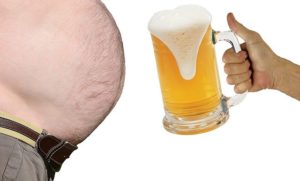
We weigh, on average, 15 pounds more than 20 years ago but we didn’t get any taller, just a lot rounder.
Lifestyle diseases – heart disease, cancer, stroke, diabetes, dementia – continue to increase as the major killers in western culture.
What changed about our biology that would cause that?
NOTHING. But our choices became less supportive of what our biologies need to function optimally over the long term.
We hit 40, 45, 50 and our biological life begins to morph, the degree of which depends on how we honored our birthright of good health in the preceding decades.
Here’s the reality.
In America, we are embarrassingly behind most other developed countries in the length of time that our elderly live in poor health and on our average life expectancy.
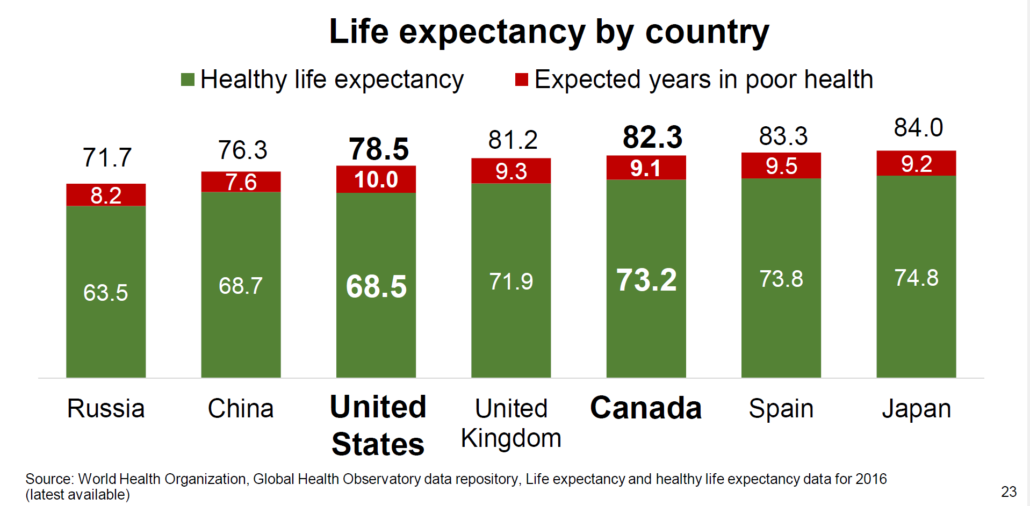
Lifestyle choices, before and after mid-life, play a big role in that statistic.
Yes – or something closer to it than Graph A.
It’s never too late to start but always too early to quit.
Our bodies have amazing recuperative powers. Our collection of 35 trillion cells have been miraculously kludged together into an incredible immune system working 24/7 to fend off nefarious invaders and keep us healthy.
Yet, we ignore and abuse that system in our ignorance of what those simple cells need to do their job.
Once we understand what they need to function optimally and then act on that knowledge, we are on a track to salvage the Back Nine and Live Long and Die Short.
I’m about to step into my ninth decade (for Kansas City Chief fans, that means I soon turn 80 years old).
Statistically, as an American male, I’m late for my funeral.
I grew up in the 1950s and can lay claim to a pretty crappy front nine. I smoked until age 37. My athletic/physical activities ceased after high school. My diet into my 50s was the SAD.
The lights began to come on June 6, 1979, when I quit smoking and began a slow progression into a lifestyle that remains today one of high levels of aerobic and anaerobic exercise, a departure from SAD and toward a more plant-based diet, and a commitment to avoiding traditional retirement.
I continue to work at what I’m good at and what I enjoy with the awareness that work is a key component of healthy longevity.
Graph B is my goal and my lifestyle choices are aimed at that with an endpoint that exceeds 100 years.
I know it could be over tomorrow. My “right” choices started a little late to expect to get past 100. But, given the choice, I’m going for it rather than to accept the average, which I’ve already surpassed.
Avoid the accelerators.
In western culture, we face more “age accelerators” than ever in history. It’s evidenced by the fact that, after 120 years of meteoric improvement, our average lifespans in American have been declining for the last several years.
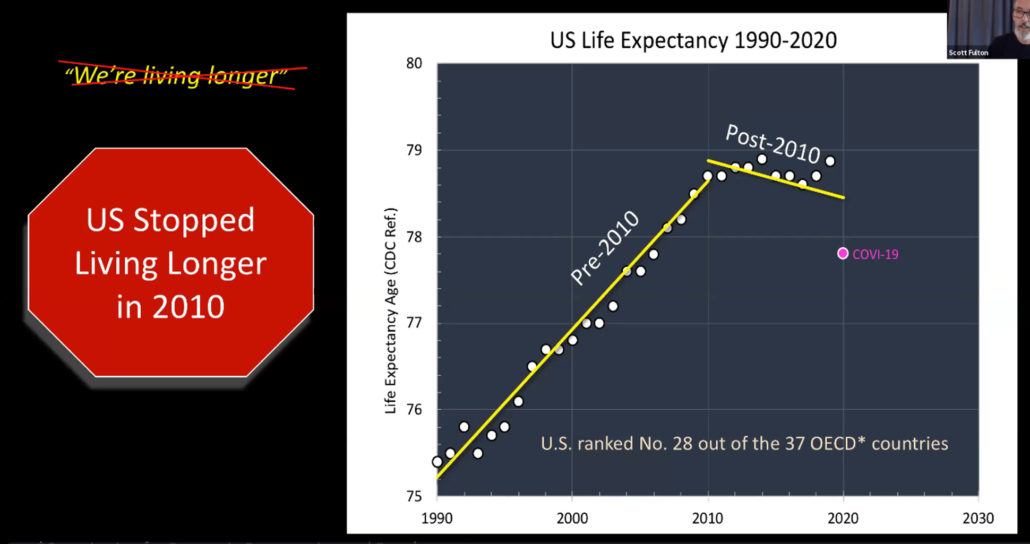
Source: Scott Fulton
Despite all the scientific and biomedical knowledge we’ve gained, we continue to choose to make bad lifestyle decisions in our pursuit of comfort and convenience and because we “compete to compare.”
We receive no help from a healthcare system that only knows cure and not prevention and a food industry that doesn’t give a rip about our health.
We’re on our own to make better choices based on knowledge.
Here’s an article that may help you make better choices and avoid the more common aging accelerators:
https://makeagingwork.com/2018/04/16/the-dirty-dozen-of-accelerated-aging/
Graph B comes from the life-changing book “Younger Next Year: Live Strong, Fit, and Sexy – Until You’re 80 and Beyond.” (paid link)
Make reading it one of your choices.
And adopt the appendix, entitled Harry’s Rules, written by co-author Dr. Henry Lodge:
Harry’s Rules
Seven clear choices to avoid the downhill.
D0 you have a plan to enact Graph B. We’d love to hear about it. Leave us a comment below.
If you have any comments or questions, please click here and you will be taken to our contact page.
Our support Hotline is available 24 Hours a day: (555) 343 456 7891

